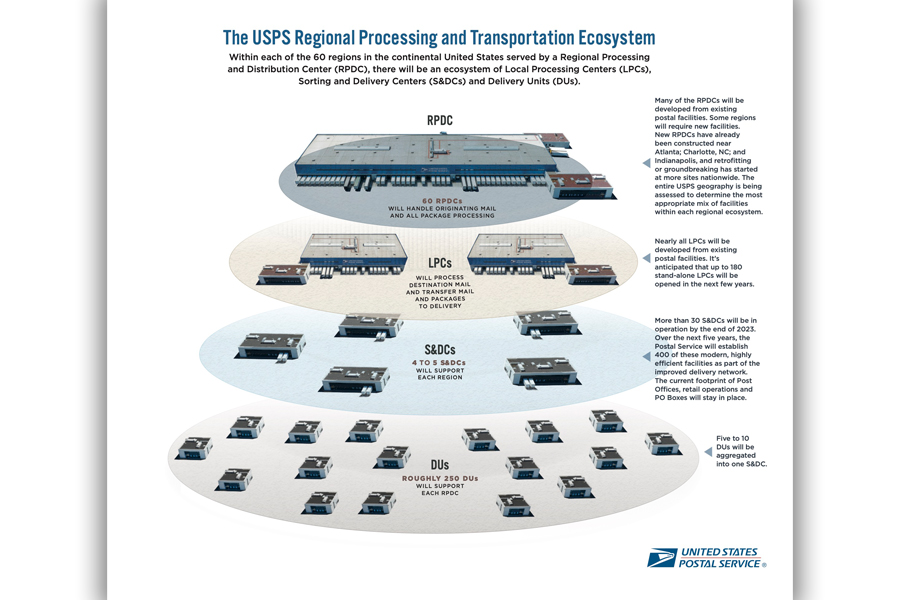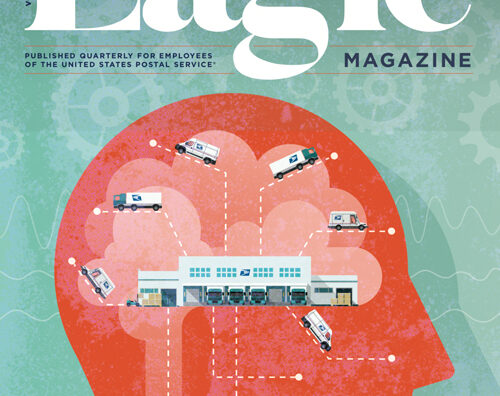The Eagle magazine’s summer edition looks at updates to USPS operations.
As mail volume grew for decades into the early 2000s, the Postal Service added more facilities and routes to handle more mail.
But now with mail volume declining and packages making up a larger portion of the total mail mix, that approach no longer works well.
As part of the Delivering for America plan, USPS has committed to invest $40 billion to refurbish facilities and design a new operational model.
“The network we are now building will rival that of our most sophisticated competitors,” Postmaster General Louis DeJoy says in the publication.
The new network is a system of connected nodes that will manage the flow of mail and packages.
Sixty regional processing and distribution centers (RPDCs) will eventually be created as the primary nodes across the nation. The first RPDCs have been built near Atlanta; Charlotte, NC; and Indianapolis. Retrofitting or groundbreaking has started at more sites.
Each RPDC will be supported by local processing centers (LPCs), nearly all of which will be developed from existing postal facilities. As many as 180 LPCs will be opened in the next few years.
The LPCs will, in turn, be supported by sorting and delivery centers (S&DCs). During the next five years, USPS will establish 400 of these modern, highly efficient facilities. Four to five S&DCs will support each RPDC.
S&DCs will replace many of the current 19,000 delivery units by aggregating five to 10 delivery units into one large facility that can serve a wider geographic area.
Existing Post Offices, retail operations and PO Boxes will stay in place.
This new processing and delivery network is expected to:
• Result in better use of the USPS ground fleet, with mail and packages traveling on the same trucks across the country, and with more mail and packages traveling by ground rather than by air.
• Streamline workflows inside facilities, which will feature large, open, clean spaces and modern, high-capacity equipment.
• Reduce the number of trips, lower costs and create a smaller carbon footprint.
“This new model establishes a much more logical, reliable, precise and efficient network to improve service and competitive posture,” the Eagle article says.



